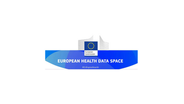- Lloyd Price
The growing importance and future of Behavioural Science in HealthTech and Digital Health

Exec Summary:
The convergence of healthcare and technology (HealthTech) has created a booming digital health industry. But technology alone isn't enough. Behaviour science is emerging as a powerful force in this field, with the potential to revolutionise how we approach health and wellness.
Why is Behaviour Science Important?
Understanding the "Why": Traditional medicine often focuses on the "what" (disease diagnosis and treatment). Behavioral science delves into the "why" behind health behaviors. It helps us understand why people make certain choices and how to nudge them towards healthier habits.
Boosting Engagement: Many digital health tools struggle with user engagement. Behavioral science principles like gamification and reward systems can make these tools more engaging and motivating, leading to better long-term results.
Personalized Interventions: A one-size-fits-all approach rarely works in healthcare. Behavioral science helps create personalized interventions that consider individual needs, preferences, and contexts. Imagine a fitness app that suggests workouts based on your personality type, or a chronic disease management program that adapts to your daily routine.
The Future of Behaviour Science in HealthTech
Just-in-Time Adaptive Interventions (JITAIs): Imagine receiving a craving suppressant notification right before you walk past a fast-food joint, or a nudge to meditate when your smartwatch detects rising stress. JITAIs deliver the right support at the right moment, maximising impact.
Micro-randomized Control Trials (MRTs): These research studies help fine-tune JITAIs by testing different intervention components in real-time. Like a scientist testing pizza combinations, MRTs identify the most effective elements for specific situations.
Hyper-personalization: The future lies in interventions tailored to individual needs and preferences. Imagine AI-powered health tools that analyse user data and recommend personalised strategies in real-time.
Focus on preventative care: Behavioral science can revolutionize preventative care by designing apps that encourage healthy habits. Sleep trackers that nudge you towards a consistent sleep schedule are a prime example.
Challenges and Considerations
Digital Equity: Not everyone has access to smartphones or reliable internet. It's crucial to bridge the digital divide to ensure everyone benefits from these advancements.
Data Privacy: As healthcare data becomes more integrated with digital tools, robust privacy measures are essential to build trust with users.
Overall, the future of behavior science in HealthTech and digital health is about creating a user-centric experience that empowers individuals to take charge of their health and well-being. By understanding and influencing behavior, we can create a healthier future for everyone.
Growth and M&A for Healthcare Technology companies
Healthcare Technology Thought Leadership from Nelson Advisors – Market Insights, Analysis & Predictions. Visit https://www.healthcare.digital
HealthTech Corporate Development - Buy Side, Sell Side, Growth & Strategy services for Founders, Owners and Investors. Email lloyd@nelsonadvisors.co.uk
HealthTech M&A Newsletter from Nelson Advisors - HealthTech, Health IT, Digital Health Insights and Analysis. Subscribe Today! https://lnkd.in/e5hTp_xb
HealthTech Corporate Development and M&A - Buy Side, Sell Side, Growth & Strategy services for companies in Europe, Middle East and Africa. Visit www.nelsonadvisors.co.uk

Future of Behavioural Science in HealthTech and Digital Health
The future of behavioural science in HealthTech and digital health is bright, with the potential to revolutionise how we approach healthcare. Here are some exciting trends to look for:
1. Hyper-personalized interventions: Behavioral science will help create interventions tailored to individual needs and preferences. Imagine a fitness app that uses nudges based on your personality type, or a chronic disease management program that adapts to your daily routine.
2. Gamification and motivation: Digital health tools will leverage behavioral science principles like gamification and reward systems to boost user engagement. Think earning points for healthy habits or competing with friends in a step challenge.
3. AI-powered behavior change: Artificial intelligence (AI) will personalize interventions further by analyzing user data and recommending strategies in real-time. Imagine an app that prompts you to meditate during moments of peak stress, identified through physiological data.
4. Addressing adherence challenges: Behavioral science will play a crucial role in tackling medication adherence and treatment plan completion. We might see digital reminders that consider forgetfulness patterns or motivational messages tailored to address specific anxieties.
5. Focus on preventative care: The future lies in preventing illness rather than just treating it. Behavioral science will be instrumental in designing apps that encourage healthy habits, like sleep trackers that nudge you towards a consistent sleep schedule.
Challenges to consider:
Digital equity: It's crucial to ensure everyone has access to these advancements. Behavioral science can help design solutions that bridge the digital divide.
Data privacy concerns: As healthcare data becomes more integrated with digital tools, robust privacy measures will be essential to build trust with users.
Overall, the future of behavioral science in HealthTech and digital health is about creating a user-centric experience that empowers individuals to take charge of their health and well-being. By understanding and influencing behaviour, we can create a healthier future for everyone.

New and Emerging Methodologies, Techniques and Frameworks
The field of behavioural science in HealthTech is constantly evolving, with new methodologies, techniques, and frameworks emerging to address the complexities of human behaviour and improve health outcomes. Here are some exciting trends to watch:
Methodologies:
Ecological Momentary Assessment (EMA) with Experience Sampling: We discussed EMA earlier, but it's worth noting its growing sophistication. EMA combined with experience sampling involves prompting users to report on their experiences (cravings, emotions) and the surrounding context (location, social setting) in real-time using smartphones. This rich data helps understand behaviour within the natural environment.
Passive Data Collection: Leveraging data from wearables (heart rate, sleep patterns) and smartphone usage (location, app activity) can provide valuable insights without requiring explicit user input. This unobtrusive approach minimises bias and reveals behaviour patterns users might not even be aware of.
N-of-1 Trials: These personalized trials involve a single participant trying different intervention variations over time. This allows for highly individualised insights on what works best for a specific person, paving the way for ultra-personalised health programs.
Techniques:
Habit Formation Techniques: Techniques like habit stacking (pairing a new habit with an existing one) and cue identification (recognising triggers for unhealthy behaviours) can be embedded in digital tools to help users build positive routines and break negative ones.
Loss Aversion Framing: People are more motivated to avoid losses than acquire gains. Framing health messages around avoiding negative consequences (e.g., "Quitting smoking reduces your risk of heart disease by 50%") can be more impactful than simply highlighting the benefits of quitting.
Social Influence and Gamification: Leveraging the power of social support and healthy competition can boost motivation. Imagine earning badges for completing healthy tasks in a fitness app or seeing friends' progress on a shared health goal.
Frameworks:
The COM-B Model: This framework identifies three key factors influencing behavior: Capability (skills and knowledge), Opportunity (environmental factors), and Motivation (psychological drivers). JITAIs can be designed to address each factor for optimal impact.
The Fogg Behavior Model: This model focuses on three elements necessary for behavior change: Motivation, Ability, and Prompt. Digital health tools can be designed to ensure these elements are present for users to engage in desired behaviours.
The BHIRT Framework: This framework stands for Behavior, Health, Intervention, and Technology. It guides researchers in developing and evaluating digital health interventions that consider the specific behaviour, health target, intervention design, and technological platform.
These are just a few examples, and the field is constantly evolving. As technology advances and our understanding of human behaviour deepens, we can expect even more innovative methodologies, techniques, and frameworks to emerge, shaping the future of HealthTech and empowering individuals to lead healthier lives.

Ecological Momentary Assessments (EMAs)
An ecological momentary assessment (EMA), also sometimes referred to as experience sampling or daily diary method, is a research method used in psychology and other social sciences to collect data on people's experiences in real-time, as they happen in their natural environments.
Why use EMA?
Traditional methods for collecting data on people's experiences, such as surveys and interviews, rely on people's memories of past events. This can be problematic because our memories are often inaccurate, biased by our current mood or perspective. EMAs aim to address this problem by collecting data in the moment, when the experience is fresh in the person's mind.
How does EMA work?
EMA studies typically involve participants carrying a small electronic device, such as a smartphone, which prompts them to answer questions about their experiences at random intervals throughout the day. The questions can be about a variety of topics, such as the participant's mood, thoughts, behaviors, and the context in which they are occurring.
Benefits of EMA
Reduced recall bias: By collecting data in real-time, EMAs can help to reduce the bias that can occur when people are asked to recall past events.
Ecological validity: Because data is collected in participants' natural environments, EMAs can provide a more accurate picture of how people think, feel, and behave in their everyday lives.
Increased temporal resolution: EMAs allow researchers to collect data on a more frequent basis than is possible with traditional methods, such as surveys and interviews. This can be useful for studying how experiences change over time.
Examples of EMA research
EMA studies have been used to investigate a wide range of topics, including:
Mental health: EMAs have been used to study the daily experiences of people with depression, anxiety, and other mental health conditions.
Substance abuse: EMAs have been used to track people's cravings for drugs and alcohol, and to identify the triggers that lead to substance use.
Stress: EMAs have been used to study how people cope with stress in their everyday lives.
Pain management: EMAs have been used to track people's pain levels and to identify the factors that influence pain perception.
The future of EMA
EMA is a rapidly growing field of research. As technology advances, EMA studies are becoming more sophisticated and are being used to investigate a wider range of topics. EMAs have the potential to revolutionise the way we study human behaviour.

2. Just in time adaptive interventions (JITAIs)
Just-in-time adaptive interventions (JITAIs) are a promising approach in the realm of digital health and behavioural science. They essentially provide right-time, right-place support to nudge people towards positive behaviours.
Here's a breakdown of JITAIs:
Right-time: Imagine receiving a craving buster notification exactly when you're walking past a fast-food joint, or an encouragement to meditate when your smartwatch detects rising stress levels. JITAIs deliver interventions when they're most likely to be effective.
Right-place: Location awareness can further personalize JITAIs. An app prompting you to do some stretches when you arrive at your work desk can help prevent repetitive strain injuries.
Key features of JITAIs:
Real-time support: JITAIs leverage technology like smartphones and wearables to collect data and deliver interventions in real-time.
Adaptive: They consider an individual's context and needs, tailoring the intervention accordingly.
System-triggered: JITAIs are automated, prompting support based on pre-defined rules or algorithms.
Benefits of JITAIs:
Increased effectiveness: By providing support at the opportune moment, JITAIs have the potential to be more impactful than generic interventions.
Reduced burden: JITAIs can be less intrusive than traditional methods, offering targeted support instead of overwhelming users.
Improved adherence: Real-time nudges can help people stay on track with their goals and treatment plans.
Applications of JITAIs:
Health behaviour change: Promoting physical activity, healthy eating, medication adherence, smoking cessation, etc.
Mental health interventions: Delivering coping strategies for anxiety or stress in the moment.
Chronic disease management: Providing reminders or adjustments to medication plans based on real-time health data.
JITAIs are still evolving, but they hold immense potential to personalise and enhance interventions across various healthcare and wellness domains.

3. Micro-randomised control trials (MRT's)
A micro-randomised control trial (MRT) is a research design specifically used to optimise JITAIs (just-in-time adaptive interventions). It essentially tests different components of a JITAI to see which ones work best and when.
Here's how MRTs work:
Participants: People who would benefit from a JITAI (e.g., someone trying to quit smoking or manage stress).
Multiple decision points: Throughout the study, participants encounter situations where the JITAI could be triggered (e.g., a craving for a cigarette, feeling overwhelmed).
Randomization: At each decision point, participants are randomly assigned to receive a specific version of the JITAI or no intervention at all (control group). This allows researchers to compare the effectiveness of different intervention options.
Data collection: The MRT collects data on various aspects, including what intervention was delivered, the participant's response, and the desired outcome (e.g., resisting a craving, using a coping strategy).
Benefits of MRTs:
Optimize JITAIs: By testing different intervention components, researchers can identify the most effective elements for a specific context.
Real-world simulation: MRTs happen in real-time, mimicking how JITAIs would function in practice.
Evaluate tailoring: They allow researchers to assess if tailoring interventions based on individual data points leads to better outcomes.
Here's an analogy: Imagine personalizing a pizza recipe. An MRT would be like trying out different cheese combinations, crust types, and veggie toppings at various points during the cooking process to see which combinations create the tastiest pizza.
Overall, MRTs are a valuable tool for developing and refining JITAIs, ultimately leading to more effective digital health interventions.
Growth and M&A for Healthcare Technology companies
Healthcare Technology Thought Leadership from Nelson Advisors – Market Insights, Analysis & Predictions. Visit https://www.healthcare.digital
HealthTech Corporate Development - Buy Side, Sell Side, Growth & Strategy services for Founders, Owners and Investors. Email lloyd@nelsonadvisors.co.uk
HealthTech M&A Newsletter from Nelson Advisors - HealthTech, Health IT, Digital Health Insights and Analysis. Subscribe Today! https://lnkd.in/e5hTp_xb
HealthTech Corporate Development and M&A - Buy Side, Sell Side, Growth & Strategy services for companies in Europe, Middle East and Africa. Visit www.nelsonadvisors.co.uk







